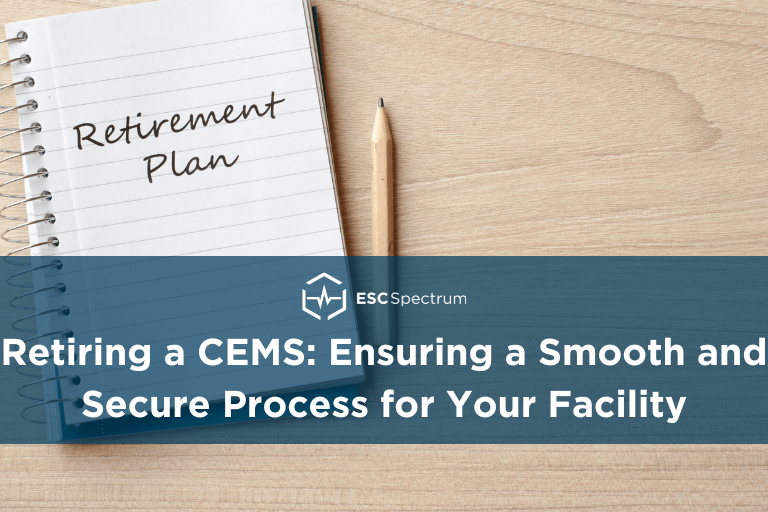Retiring a Continuous Emission Monitoring System (CEMS) is a significant undertaking for any facility. While the number of units retiring has decreased compared to the past decade, it remains a critical process that requires careful planning and execution. This blog post will guide you through the essential steps for retiring your CEMS and managing your air emissions data both before and after the unit ceases production.
First Steps for Retiring a CEMS
The first step in retiring a CEMS unit is notifying the Environmental Protection Agency (EPA) and your state agency of your intention to stop production. This notification is crucial as it ensures compliance with regulatory requirements and sets the stage for the rest of the retirement process.
Once a final shutdown date is established, you need to plan the management of the server that houses your emissions database. For convenience and to produce clean Emission Data Report (EDR) files, it’s recommended to keep the server running until the end of the quarter in which the unit ceases production.
Next Step for CEMS Retirement: Decommissioning
After successfully submitting your EDR files and shutting down the unit, you can begin the next step of retiring a CEMS: decommissioning. This involves several key steps:
1. Equipment Removal:
All equipment must be dismantled and removed from the site. This includes the server that contains your database.
2. Building Demolition:
Once equipment is secured, the building demolition process can begin.
3. Server Storage:
Store the server containing your emissions database in a secure, cool, and dry place. You will need access to this server for at least five years (or longer, depending on state requirements). This is required to address any potential challenges to the accuracy of previously submitted data.
For more information on what the EPA expects from retiring plants, read this fact sheet that it assembled on Plant Decommissioning, Remediation and Redevelopment.
Retiring a CEMS Final Steps: Securing Your Data and How ESC Spectrum Can Help
Since the EPA requires access to your emissions data for years after retiring a unit, the final step involves finding a secure data center for its storage. It can be a hassle to manage the server yourself over this period. As an alternative, ESC Spectrum offers retirement services. With this service, your Data Acquisition System (DAS) server would host at a secure data center and can be accessed through a secure VPN tunnel.
This makes data accessible without the struggle of having to manage the server yourself. With the notification of retirement and maintaining the server taken care of you can take a deep breath and know that your air emissions are secure.
Not ready to retire a unit? Reclassifying a unit as Low Mass Emitting (LME) might be the right fit for you. Changing an existing unit in the Acid Rain Program to be classified as LME can only occur at the year’s end and plants must have submitted the paperwork for this classification change before mid-November.
Watch our webinar “Should We Convert to Low Mass Emitting (LME) Units?” if you think converting may be right for your facility. The ESC Spectrum Reporting team can help review facility data to determine if changing to an LME makes sense. To learn more about our LME services, view our Reporting Services page.
Want to learn more about EDR’s? Read our blog post: “Environmental Data Registry (EDR): A Guide to Effective Emissions Data Management“.
Interested in learning a more comprehensive overview of how CEM Systems work? Read Understanding Continuous Emissions Monitoring Systems (CEMS): A Comprehensive Guide. This guide will give you a complete understanding of all the components in the flow of a CEMS.



